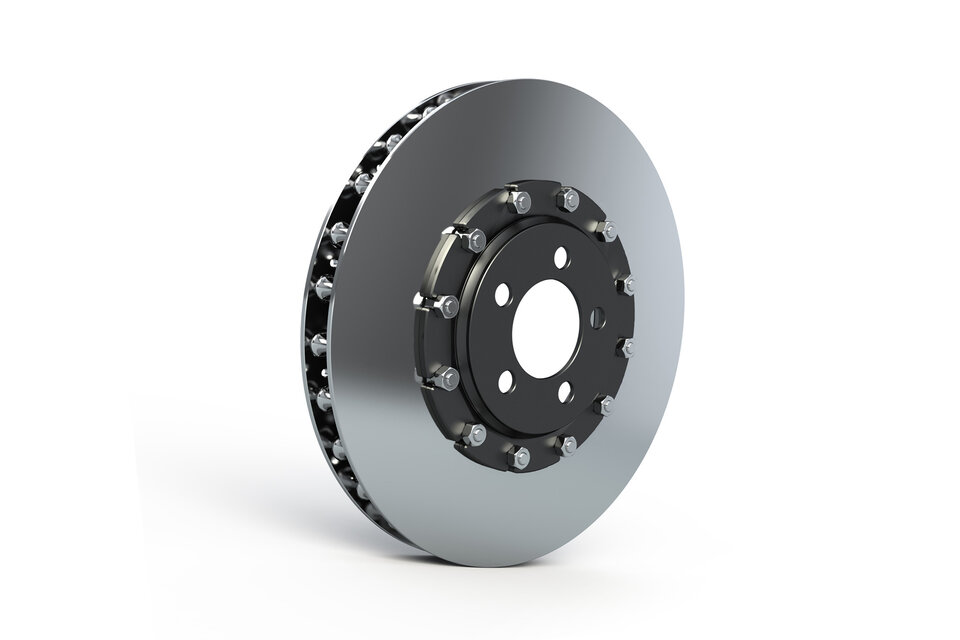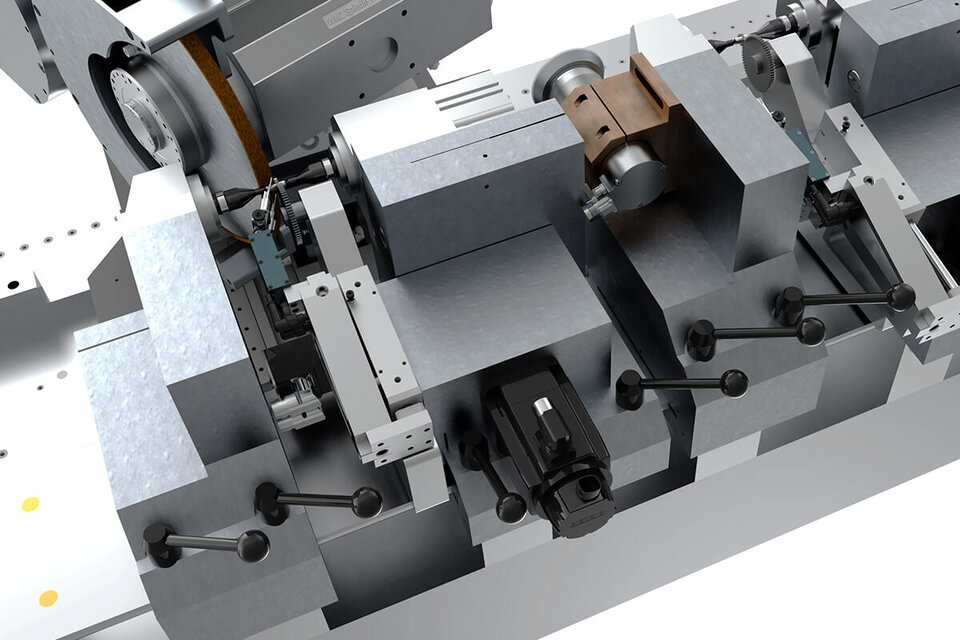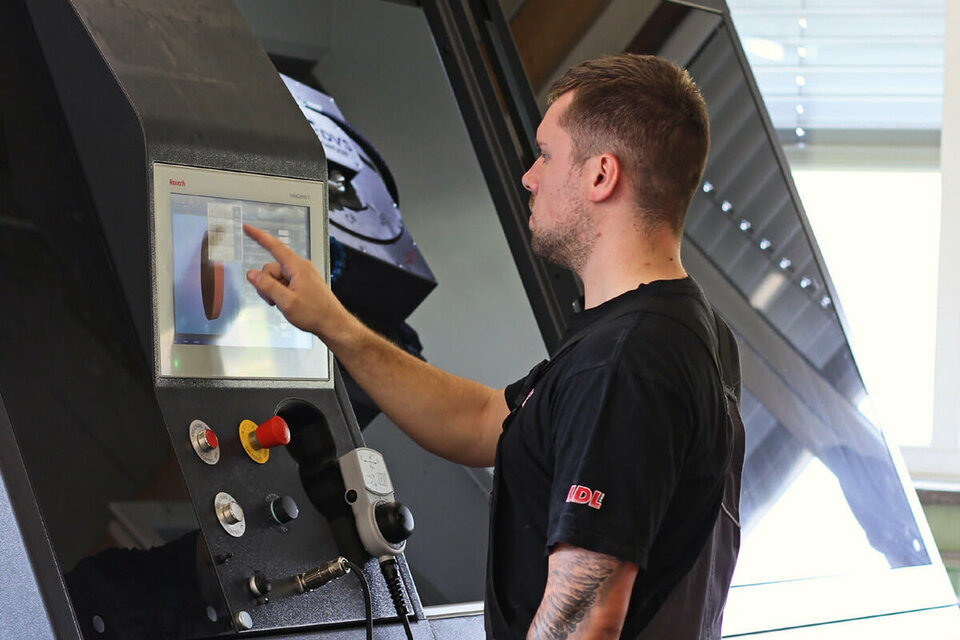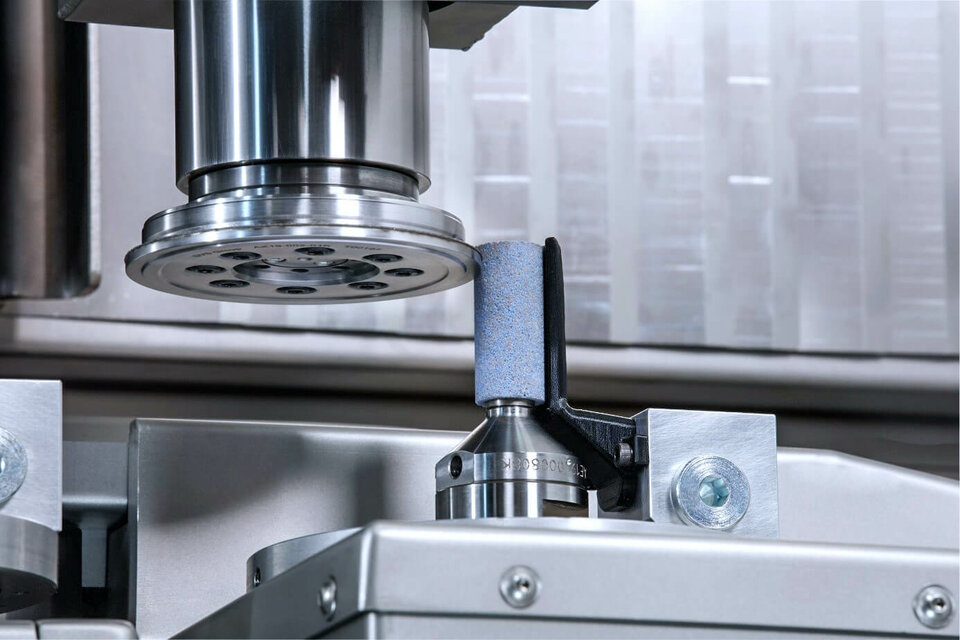In recent years, particulate matter pollution has become a top issue in health and environmental policy and thus ultimately also in transport policy. It goes without saying that manufacturers are therefore also highly interested in reducing the particulate emissions of their products as much as possible.
A large proportion of traffic-related fine dust pollution is caused by the abrasion of tyres and brakes. This pollution can be significantly reduced for brakes by using new materials. Conventional grey cast iron brake discs are coated with high-strength, wear-resistant metals for this purpose. This is a great advantage for drivers and the environment, but it presents a new production challenge for the brake disc manufacturer.
A thin layer of tungsten carbide or aluminum oxide is applied to the brake discs. To ensure that this coating adheres to the gray cast iron, the surface is first structured by laser and provided with an intermediate layer of nickel. This ensures good adhesion of the hard coating and, with a certain degree of elasticity, balances out the different thermal expansion coefficients of grey cast iron and tungsten carbide. Due to the fine and very hard surface of the coating, the wear of the brake pads is considerably less - and thus also their share of fine dust pollution.
After coating, the friction surfaces of the brake disc must be ground on both sides to ensure surface quality, flatness and plane-parallelism. This places high demands on the production process and on the processing machines and tools.
The advantages of coated brake discs
- Due to the high wear resistance and durability of the brake discs and pads, fine dust formation is 90% lower than with conventional discs.
- No scoring and rust formation, therefore constantly high deceleration power even after several consecutive braking manoeuvres as well as no "fading effect" (decreasing braking effect when the brakes are heavily loaded).
- The high heat resistance also counteracts the fading effect.
- The large-area contact between brake disc and pad results in better braking behaviour overall, which in turn means shorter braking distances - even in the wet.
Sustainable and secure
Brakes of electric vehicles are less stressed due to the higher braking effect of the motor. On conventional brake disks, however, rust film can easily form, which impairs the braking effect. The stainless carbide coating will therefore also play an important role in terms of electromobility. Due to the high production costs, the price of coated brake discs is about five times higher than that of conventional cast iron discs. For this reason, coated brake discs have so far only been offered for vehicles in the upper price range.
However, the advantages suggest that this will change in the foreseeable future. In terms of the environment, safety and suitability for electromobility, it can be assumed that coated brake discs have a high potential for future vehicle generations and will become the standard in all vehicles in the long term.
Requirements on the production
With all their advantages, carbide-coated brake discs place enormous demands on production and machining technology.
- The hardness of the coating of up to 1000 HV allows only small infeeds and requires special abrasives.
- In order to ensure a constantly high braking effect, the friction surfaces of the brake discs must be absolutely flat and plane-parallel and have a high surface quality.
- Cost pressure and high quantities require short cycle times
Modification of the DVS UGrind
DVS Universal Grinding GmbH has taken up these challenges and modified the proven DVS UGrind accordingly.
The DVS UGrind is the universal workshop machine for the combined hard fine machining of small and medium batch sizes from DVS Universal Grinding GmbH. Its modular design also allows the adaptation to special requirements or manufacturing processes, such as those that occur when machining difficult-to-machine materials or when manufacturing large quantities.
The brake discs are machined in the so-called double surface grinding process. For this purpose, a DVS UGrind was equipped with two opposing grinding spindles, between which the brake discs are simultaneously machined from both sides. Dimensional accuracy is ensured by means of in-process measurement of the thickness of the brake disc. In the machine, the position in Z-direction and the thickness of the brake disc are determined before machining. On this basis the brake disc is ground to size on both sides. This ensures that the tight manufacturing tolerances are maintained within a short machining time. A robot system for automatic loading and unloading of the machine with brake discs ensures the necessary throughput.
The grinding wheels used also come from the DVS Group. In a close development cooperation between DVS Universal Grinding and the abrasives manufacturer Naxos-Diskus Schleifmittelwerke, the grinding process was optimised with regard to economy and quality. A good ratio between material removal and grinding wheel wear enables a high workpiece throughput at low tool costs.
Future Prospects
At present the worldwide annual demand for brake discs for commercial vehicles alone is around 450 million units. Based on the above-mentioned advantages, it can be assumed that coated brake discs will be used in more and more vehicles in the future - which will naturally also increase the demand for suitable machine tools and tools. DVS Universal Grinding is not only in a position to keep up with the development, but also to push it further forward with innovative solutions.





